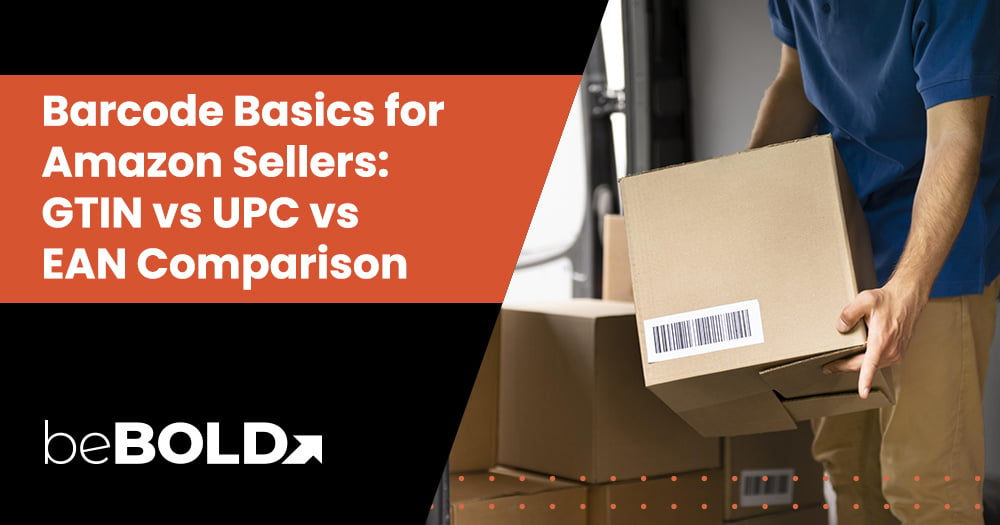As an Amazon seller in 2024-2025, you may have come across a few stumbling blocks while navigating the platform's policies and requirements. One of the most significant challenges that sellers face today is managing inventory under the constraints imposed by Amazon Fulfillment by Amazon (FBA) restock limits.
These limits dictate the maximum amount of inventory you can store and ship to Amazon's fulfillment centers. Understanding the intricacies of these restrictions is crucial to maintaining a smooth flow of stocks, preventing stockouts, and avoiding potential penalties.
This blog dives deep into Amazon's restock limits, providing valuable insights into why they exist, how they are calculated, and how you can navigate them to optimize your inventory flow, boost your sales, and ultimately grow your business.

Understanding Amazon Restock Limits in 2024
In 2024, Amazon continued its practice of imposing restock limits. These limits, applicable to new and established FBA sellers, specify the maximum amount of inventory you can store and ship to Amazon’s fulfillment centers anytime.
How Amazon Restock Limits Are Determined
Determining Amazon restock limits relies heavily on careful data analysis and sophisticated algorithms. Amazon calculates restock limits based on a variety of factors, primarily considering a seller's past and projected sales across all the ASINs in their catalog. This means both organic and paid advertising sales data are taken into account.
Besides, Multi-Channel Fulfillment (MCF) orders can significantly impact Amazon FBA restock limits, as Amazon tracks and attributes them accurately. Additionally, restock limits remain consistent across marketplaces, meaning sellers face identical constraints in regions like Amazon UK or Canada. Understanding these factors allows sellers to anticipate limits, optimize inventory planning, and manage sales flows efficiently.
Difference Between Restock Limits and Storage Limits
While both influence how much inventory you can store in Amazon's FBA fulfillment centers, restocking and storage limits differ in their functionalities. Restock limits regulate the maximum number of shipments you can send to the FBA fulfillment centers — measured in units — irrespective of your IPI score.
On the other hand, amazon storage limits specify the total space you can use for storage of standard size items at Amazon's warehouses, expressed in cubic feet. Unlike restock limits, storage limits are calculated quarterly and influenced mainly by your Inventory Performance Index (IPI) Score. If your inventory performance dips below a specified threshold, you could possibly face reduced storage limits.
Essentially, while storage limits concern the physical space you are allotted, restock limits restrict the quantity of merchandise you can send for storage.
Why Amazon Implements Restock Limits?

While restocking limits may seem frustrating to FBA sellers, they serve a beneficial purpose for Amazon. Primarily, these limits enable Amazon to regulate its warehouse space and prioritize items with higher demand.
Furthermore, these restrictions discourage sellers from using Amazon’s fulfillment centers as storage facilities for long-term inventory parking.
By imposing restock limits, Amazon ensures the seamless and efficient utilization of its vast network of fulfillment centers.
Changes to Amazon Restock Limits in 2024
In 2024, there was a significant shift in Amazon's approach to restocking limits. The company transitioned from weekly restocking and quarterly storage volume limits to introducing a monthly FBA capacity limit for each storage type.
This unified monthly capacity limit aims to integrate both restock and storage metrics into one metric, offering sellers easier and more predictable inventory management.
How to Manage Your Inventory with Restock Limits?
Navigating the hurdles of restocking limits requires strategic planning and effective inventory management. As a seller, you need to look at the bigger picture, remain up-to-date with your restock limits, and carefully manage your inventory levels. There's more to do, which we will learn in detail in the following sections.
1. Reducing Utilization
Reducing utilization could be an innovative solution when aiming to effectively manage your inventory within Amazon's restock limits. Utilization refers to current FBA inventory levels, including stock in hand and underway shipments, pending reception, or in transit.
Managing this carefully is essential to ensure you're using your allowed inventory space effectively.
Here are some ways to reduce utilization:
- Review Old Shipments: Regularly check your old open shipments and evaluate whether some should be canceled to free up your available utilization quantity.
- Manage Returns Efficiently: Overutilization can occur from an influx of customer-returned items. Opt for refundless returns to manage them more effectively.
- Submit Removal Orders: If you notice certain items aren't moving as expected, it may be worthwhile to submit a removal order, freeing up valuable space in your inventory.
2. Restocking Popular Products to Increase Sales
When working with Amazon's restock limits, strategic restocking of your popular items becomes necessary. These best sellers yield solid sales volume, contributing significantly to your brand's success.
Being understocked could risk lowering your product rankings and disappointing potential customers with stockouts.
To optimize restocking, follow the below pointers:
- Use Accurate Sales Forecasting: Analyze historical sales data and market trends to anticipate demand and maintain optimal inventory levels.
- Adjust for Peak Periods: Modify reorder frequency and quantities during sales events or peak seasons to align with projected demand spikes.
- Stock Strategically: Ensure adequate stock of popular products to demonstrate effective inventory management, which may lead to increased capacity limits in the future.
3. Decreasing Inventory in Fulfillment Centers
Occasionally, reduce your inventory footprint within Amazon's fulfillment centers to manage to restock limits better.
Holding too much stock in these centers can quickly eat into your restock limits, leaving little room for you to introduce new products or replenish fast-selling items.
Consider the following strategies:
- Clearing Slow Sellers: Conduct regular inventory audits and identify products with slow sales velocity. Consider discounting them or running promotions to clear out stagnant stock rapidly.
- Slimming Down Bulky Items: Reassess the necessity of items with large storage requirements. If they are selling slowly, consider selling off, liquidating or discontinuing such items.
- Balancing FBA and FBM: Switch to Fulfilled by Merchant (FBM) for certain non-perishable or slow-moving items, keeping your FBA storage freed up for high-demand items.
How to View the Storage Type of a Product?
Storage type is an essential parameter that Amazon assigns to each product. This helps categorize the products for their fulfilled-by-amazon program as standard-sized, oversized, or specialized categories like footwear, apparel, aerosol, or flammable.
To view this information, follow these steps:
- Log in to your Amazon seller central account.
- Click on the 'Inventory' menu and select 'FBA Inventory' from the dropdown.
- This page displays a list of your listed products along with their respective storage types.
Understanding the product's storage type helps you anticipate how much inventory you can send to Amazon’s fulfillment centers under your current restock limit.
Is It Possible to Change the Storage Type of a Product?
While sellers may be inclined to change the storage type of a product to better fit their inventory strategy within Amazon's restock limits, it's important to note that Amazon assigns storage types based on the product's characteristics.
Once set, the seller cannot alter a product's storage type. This is also true for the distribution of account-level restock limits - you cannot trade restock limits between different storage types. Thus, understanding and planning around the assigned storage type of your products is a critical part of managing inventory under Amazon's restock limits.
Monitoring and Increasing Your Restock Limits

Managing restock limits requires you to monitor them regularly, monitor changes, and take necessary actions. Let's check out how you can do this in the following sections.
1. Calculating Your Amazon Restock Limits
Amazon calculates your restock limit based on your past and projected sales forecasts across all your Active Standard Identification Numbers (ASINs). A complex set of algorithms generates the latter, considering both organic and paid advertising sales data. Even Multi-Channel Fulfillment (MCF) orders that Amazon can track and attribute accurately are included in the final calculation of FBA restock limits.
To view your restock limits:
- Navigate to 'Seller Central'
- Head over to the 'Inventory' menu
- Click on "Dashboard" from the drop-down
- At the bottom, find the 'Restock Limits' tab, aka Amazon restock limits monitor tool
- Click to expand
Your restock limit would be comprising three quantities listed:
- i) Utilization quantity,
- ii) Maximum inventory level, and
- iii) Maximum shipment quantity.
The maximum inventory level quantity is your FBA restock limit — it's essentially the sum of utilization quantity and maximum shipment quantity.
2. Restock Limits Monitor
Monitoring restock limits on Amazon through Seller Central allows sellers to track their utilization quantity, maximum inventory level, and maximum shipment quantity using the capacity monitor. Utilization quantity on Amazon shows your current FBA inventory levels, including the stock in hand and any shipments that may be in the working, receiving, or in-transit status.
However, the utilization quantity does not include reserved inventory or inventory pending removal from Amazon.
The maximum shipment quantity, on the other hand, represents the number of units you can send to Amazon without violating your restock limit. Keeping tabs on these numbers is essential to manage your shipments effectively within Amazon's restock limit.
3. Strategies to Increase Restock Limits
If you find yourself consistently hitting the upper limit of your restock allowance, you might want to consider specific strategies to increase your restock limits.
- Understanding Storage Capacity and New Restrictions: Amazon sets quarterly storage limits in cubic feet based on your Inventory Performance Index (IPI) score to manage your own warehouse space efficiently. Limits may tighten during high-demand periods like Prime Day or holidays.
- Leveraging Amazon's Performance Metrics: Maintain a balanced IPI score by optimizing excess inventory, sell-through rate, in-stock rate, and stranded inventory. High sales volume and strong metrics can lead to increased restock allowances.
- Impact of Product Categories: Restock limits vary by product storage type (e.g., standard, oversized, or Hazmat). Categories with approval requirements or special handling have unique constraints, requiring tailored inventory strategies.
Tips for Dealing with Amazon Restock Limits
Amazon's restock limits can pose challenges to sellers, but several valuable tips can help you navigate them. Let's check out these tips right away.
1. Optimize Sell-Through Rate
Drive sales by running targeted PPC campaigns, creating engaging A+ Content to improve product visibility, leveraging external traffic through social media and SEO, and maintaining competitive pricing. These strategies increase sales velocity, enhance inventory turnover, and can lead to higher restock limits.
2. Reduce Aged Inventory
Identify slow-moving products and clear them out with discounts, promotions, or removal orders to avoid high storage fees and improve your IPI score. Selling these items on alternate platforms like eBay or local retailers can also free up extra space and restock capacity.
3. Monitor Restock Limits
Regularly review restock limits through Seller Central, especially during Amazon's monthly updates. Proactive adjustments to inventory levels can prevent stockouts, overage fees, and dips in performance metrics that impact future limits.
4. Adjust Pricing
Competitive pricing ensures quicker sales and helps maintain a strong turnover rate. For slow-moving products, lowering prices can clear stock, while for high-demand items, experimenting with higher price points may increase profits without affecting sales volume.
5. Leverage Replenishment Alerts
Amazon FBA's replenishment alerts notify you when to restock based on sales velocity and stock levels. Using these alerts helps prevent stockouts and overage fees and ensures smooth inventory flow, contributing to better performance.
6. Diversify Product Portfolio
Add new products across different categories or storage types to maximize your restock flexibility. Diversification spreads risk and allows for better inventory management across distinct restock limits, provided all new products align with your brand and customer needs.
Struggling with Amazon Restock Limits in 2024? Here's How beBOLD Digital Can Help You Succeed
Despite your best efforts, dealing with Amazon's restock restrictions can sometimes feel overwhelming. This is where professional assistance like beBOLD Digital can make all the difference. With a thorough understanding of restock limits, inventory management, and Amazon operations, we can navigate these challenges effectively to ensure your business thrives.
By combining strategic planning with sound inventory management practices, our expert team will aid in optimizing your restock limits and maximizing your Amazon business growth. Contact Us today to get started!
Conclusion
Mastering Amazon's restock limits is crucial for long-term success on the platform. Regularly monitoring these limits and aligning your inventory strategy with Amazon's performance metrics can optimize sales velocity and improve your IPI score, potentially securing higher restock allowances.
Effective inventory management, including maintaining healthy turnover rates and clearing slow-moving stock, plays a key role in boosting your brand's visibility and performance.
With the right strategies in place, sellers can overcome restock challenges and achieve sustained growth in the dynamic Amazon marketplace.
Frequently Asked Questions
Can I Request an Increase in My Restock Limits?
Yes, you can request an increase in your restock limits through the Capacity Manager tool available in Seller Central. However, whether Amazon grants your request for extra capacity depends on factors like your IPI score and sales history.
How Often Does Amazon Review and Change Restock Limits?
Amazon reviews and updates restock limits periodically to adapt to demand changes. The frequency of these reviews can vary based on marketplace dynamics, seasonal trends, and other factors. Understanding this process can help sellers strategize their inventory management efficiently.
When Does Amazon Reset Restock Limits?
Amazon does not have a set schedule for resetting restock limits. It reviews each seller's performance and inventory management best practices monthly and makes adjustments accordingly.
Are Restock Limits the Same for All Marketplaces?
Restock limits are the same across all Amazon marketplaces, whether Amazon USA, Canada, or others. Therefore, global sellers must adjust their storage and shipping based on consistent restock limits.
How Can I Avoid Reaching My Restock Limit?
Avoiding your capacity limits can be achieved through effective proactive inventory management. Maintaining a balanced inventory by minimizing excess stock, keeping popular products in stock, fixing any stranded inventory, and regularly checking your restock limits can help avoid hitting your capacity limit.
Get a Free Brand Audit from beBOLD Digital!








Comments